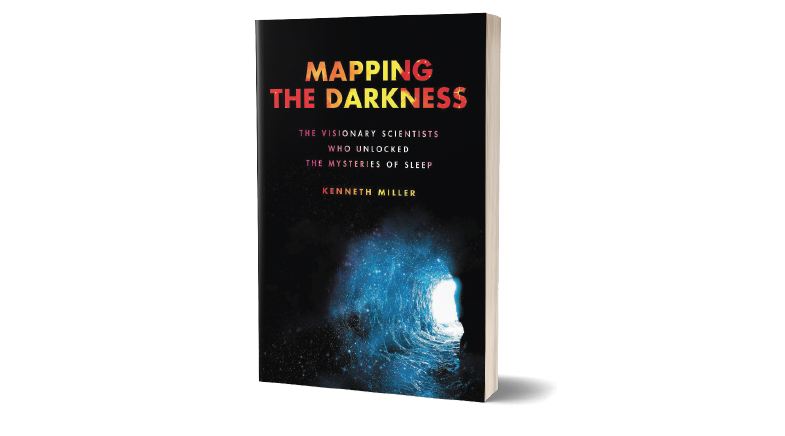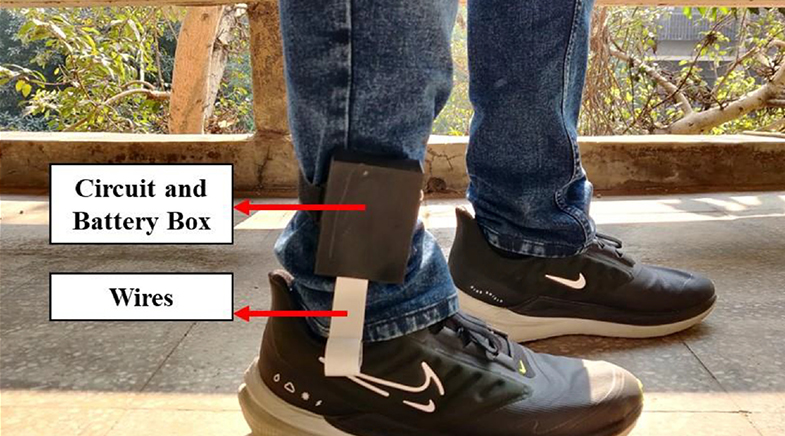Why 'sickcare' needs healing
-
- from Shaastra :: vol 02 issue 03 :: May - Jun 2023

An advocacy of scientific wellness via healthcare that is predictive, preventive, personalised, and participatory.
Given an opportunity to read and review an advance copy of The Age of Scientific Wellness, by Leroy Hood (Lee) and Nathan Price, I grabbed it. Having had the pleasure of meeting Lee, I was certain that the book would veer away from the well-trodden path and enter new territories. I was not disappointed. Even in the unusually long introductory section, before the book gets to the main business, there is much to learn from Lee's journey. It makes one consider how new thinking emerges, the environments in which it can be nurtured, and equally important, the environments in which it dies – no matter how prestigious the place.
The key point is perhaps best captured in a passage towards the end: "The path to scientific revolution... is to think very big but be willing to celebrate any meaningful steps toward your goal, no matter how small those steps seem compared to the extent of your desires." This is a wonderful way to describe the dream of a new age of wellness, where disease is stopped before it ever arises, where diagnosis is made before the symptoms manifest themselves, and where the development of symptoms should be seen as a failure of a new form of P4 care: predictive, preventive, personalised, and participatory. This book is an articulation of the grand vision and a celebration of some small steps. To quibble about the celebratory tone of the book, when so much remains to be done, is to miss this point.
PREVENTION IS THE KEY
A recurring motif in this book is about the need to shift from sickness-centric medicine – what the authors call 'sickcare' – to wellness-centric thinking and prevent sickness. According to the authors, we have been trying to stop wildfires by watching for smoke on the horizon. But can we intervene before the blaze begins? The authors suggest that we can, by defining wellness in quantitative terms at an individual level and acting when there are measurable deviations from this state. It is a good answer, but one that invites criticism. While 'smoke signals' may be late, they are conclusive and thus actionable. Lowering the threshold for action increases the risk of false-positive alerts and of harm through incorrect actions. It goes against the grain of primum non nocere – first, do no harm – a philosophy that justifies inaction during periods of medical uncertainty. The authors acknowledge this weakness and propose that a multiplicity of highly sensitive indicators pointing in the same direction will overcome this limitation. While this is plausible, the conflict with primum non nocere only disappears when the actions to be taken are simple, cheap, and unlikely to cause harm. This applies well for healthy lifestyle interventions, where the book focuses most. While there is optimism in the book about changing the course of cancer, current technology and costs limit this to the high-risk population.
The need to shift from sickness-centric medicine to wellness-centric thinking and prevent sickness is a recurring motif in the book.
After setting the stage for the next step in the evolution of medicine that is dependent on dense multi-modal data, collected at high frequency for each person, the book explores the important developments in data science that make this vision possible. The authors see an inevitability of increasingly complex health datasets such as digital twins, where children will be sequenced at birth and rich health data will be harvested through their lives, enabling wellness-centric medicine. Artificial Intelligence (AI) is presented as the solution to such increasingly complex data, containing informative patterns that cannot be fully processed by the human mind.

It is said that we tend to overestimate the short-term impact of new technologies and underestimate their long-term impact. This seems to be one such area where what seems like fiction today will be exceeded by tomorrow's realities. While the authors do enumerate transitional challenges, ranging from scientific aspects, such as the current limitations of AI, to social issues such as privacy or equity, they see them as minor hiccups. Recent experiences with generative large language models (LLM), such as ChatGPT, suggest otherwise. Unforeseen consequences such as hallucinating AI, recent calls for a moratorium on LLMs, are too new to have been fully covered in the book, but the authors do allude to the fact that AI can be extremely smart, yet stupid in unimaginable ways for humans. To me, it appears that we are indeed at the end of a beginning in modern-day digital health, but still very far from the end goals.
Beyond the large amount of digestible yet cutting-edge information about scientific wellness, suitable for levels ranging from novice to expert, where this book truly shines is in the deeply personal accounts of progress, successes, failures, and heartbreaks. Two parts stand out.
First, Lee's account of how his vision of a systems biology institute came to be. He pulls no punches while describing the systemic resistance to change and academic arrogance within institutions. The comment (by a head of a department) that a janitor's closet is all the space a biology department would ever need for computing reminds people of my generation about how much has changed over a relatively short period.
NEW AGE OF MEDICINE
An interesting point that the authors bring out that we don't think enough about is a statement by physicist Freeman Dyson: "New directions in science are launched by new tools much more often than by new concepts." This is particularly apt for the digital transformation of biomedicine in the past few decades. If one traces the history of AI, it becomes obvious that the fuel for the boom over the past two decades is not new thinking about AI or computers in medicine. The key concepts of AI have been around for the past 50 years, including the theoretical basis of neural networks. The scale of digital data and computation required to make it work – the necessary tools – are what digital transformation delivered. Digging further, the trigger event for massive scaling was the Internet, which brought digital into every home and made ordinary citizens part of a great scientific watershed. The participatory aspect of P4 medicine recognises that only when wellness-centric thinking and a culture of routinely measuring wellness by wearable health devices percolate into every house will the next age of medicine start.
We are at high risk of spending our terminal years with greatly diminished mental faculties, while our bodies live on.
Second, the heartfelt sections on brain health and dementia. The authors make simple but powerful arguments for research into understanding and slowing brain ageing, such as the fact that life expectancy is now higher than the median age for dementia. This is a clear warning that we and our loved ones are at high risk of spending our terminal years with greatly diminished mental faculties, while our bodies live on. This is clearly not the end anyone would wish for; it is possibly more traumatising for the family than an early death. The authors discuss lifestyle changes by which the ratio of years lived with adequate brain health to years lived can start to approach 100%. Nutrition and exercise are obviously an important part of it, but so are scientifically designed brain-training programs. BrainHQ, an adaptive program to challenge and train an individual based on their performance levels, finds a mention. Developed by Michael Merzenich, who won The Kavli Prize in neurosciences, such training has been credited with helping professional athletes like Tom Brady retain their mental edge as they grew older in a hyper-competitive space. Whether such solutions, which may carry significant monetary and time costs, should be targeted at high-risk groups or advocated for all remains an open question. Using his own family as an example, Lee engagingly discusses how genetic testing has helped his children understand and manage their risks for Alzheimer's disease, which prematurely took away his wife. While such individualised understanding and management offer critical evidence, most genetic data comes from white individuals of European descent, who otherwise form only 15% of the global population and have lower genetic diversity compared to Africans or Asians. Much remains to be done before such ideas can scale globally or even within America.

These sections also help crystallise what is wrong with current medicine and why failed paths such as targeting of plaques and tangles in Alzheimer's disease continue to be followed by the majority of researchers despite overwhelming evidence that they are a correlation, not a cause. It should hopefully make many of us retrospect about the potential for serious error by being highly reductionist in modelling complex human diseases. Whether the new age of P4 medicine comes as fast as the authors hope, or decades later with small steps compared to the big desires, this book seeds the idea that current medicine is deeply flawed and needs to get better. From such seeds will emerge the next 'Big Sky' ideas. That is why I recommend the book.
Dr Anurag Agrawal is Dean, Biosciences and Health Research, Trivedi School of Biosciences, Ashoka University.
Have a
story idea?
Tell us.
Do you have a recent research paper or an idea for a science/technology-themed article that you'd like to tell us about?
GET IN TOUCH














